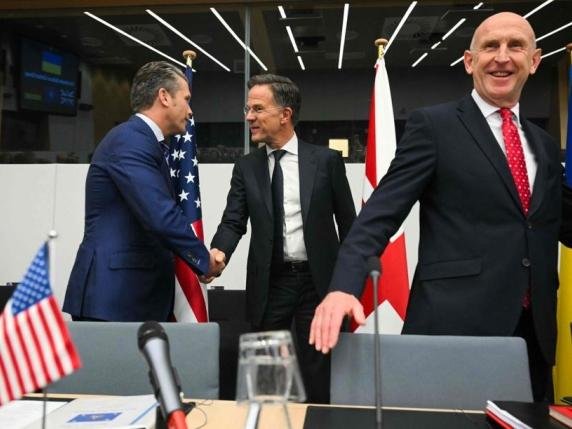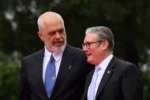The world is closely watching U.S. President Donald Trump’s next steps in maintaining peace after his recent success in the Middle East, with Friday’s meeting with Ukrainian President Volodymyr Zelensky expected to reveal his current stance. Meanwhile, U.S. Secretary of Defense Pete Hegseth issued a strong warning to Moscow, declaring that Russia will face serious consequences if it continues its aggression in Ukraine.
Speaking during the Ukraine Defense Contact Group meeting — held right after the NATO Defense Ministers’ Summit — Hegseth emphasized that the United States and its allies are ready to impose heavy costs on Russia should the war persist.
“If we must take that step, the U.S. Department of Defense is prepared to do its part in ways only America can,” Hegseth stated.
Focus on Long-Range Missiles and Allied Support
The supply of Tomahawk long-range missiles to Kyiv has not yet been officially discussed within NATO, as it remains a bilateral issue between the U.S. and Ukraine, explained NATO Secretary-General Mark Rutte. However, this topic is expected to dominate the agenda during tomorrow’s talks in Washington.
Hegseth also urged allies to increase investments in the Prioritized Ukraine Requirements List (PURL) — a program replacing direct U.S. arms donations with a shared funding model among allies.
“Every nation at this table must contribute. There should be no unfair beneficiaries,” Hegseth warned.
Initially joined by six countries — the Netherlands, Denmark, Norway, Sweden, and Germany — the PURL coalition has now grown to 16 members, Rutte confirmed. However, key nations such as the United Kingdom, France, Italy, and Spain have yet to join.
British Defense Minister Healey stated that London is still evaluating participation in the initiative.
NATO and EU Discuss Strengthening Defense Capabilities
NATO defense ministers also discussed measures to strengthen airspace protection following several Russian airspace violations over Europe. This debate extended to the European Union, where representatives of the 27 member states reviewed a 2030 defense action plan aimed at filling Europe’s military capability gaps.
The EU’s draft plan includes four main projects:
- A drone defense initiative (“drone wall”)
- Strengthening the Eastern flank
- Air defense systems
- Space defense coordination
EU High Representative Kaja Kallas explained that while NATO provides military strategy, member states are responsible for supplying equipment, with the European Commission ensuring that 40% of defense tenders are joint by 2027.
Germany to Lead the Air Defence Shield Project
Meanwhile, Germany has expressed readiness to lead the Air Defence Shield project, announced Defense Minister Boris Pistorius. He confirmed that Germany will invest €10 billion in drones of all types — both offensive and defensive — over the coming years.
“Putin’s hybrid behavior is becoming increasingly aggressive,” Pistorius warned, underscoring the importance of European air and space defense modernization.







